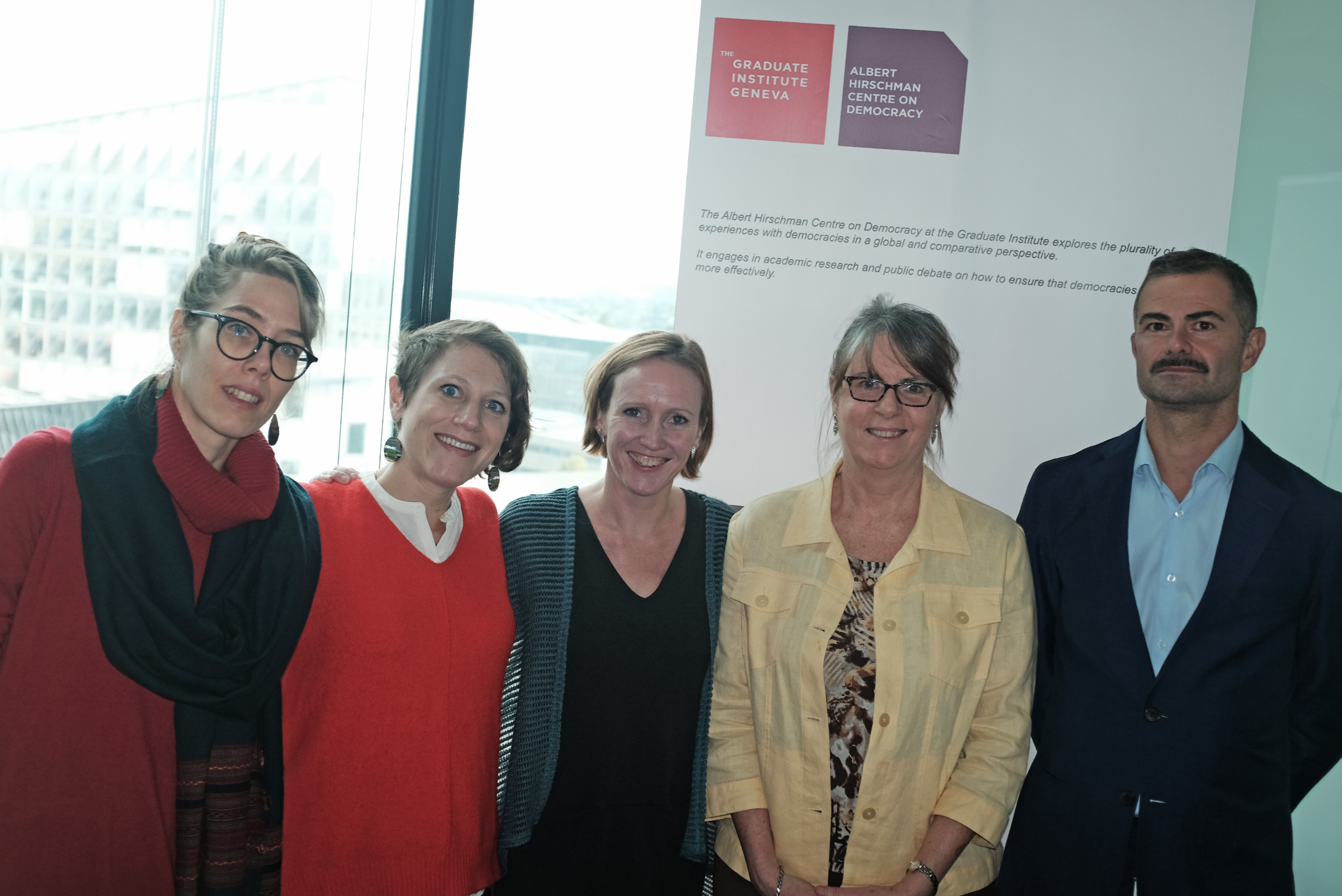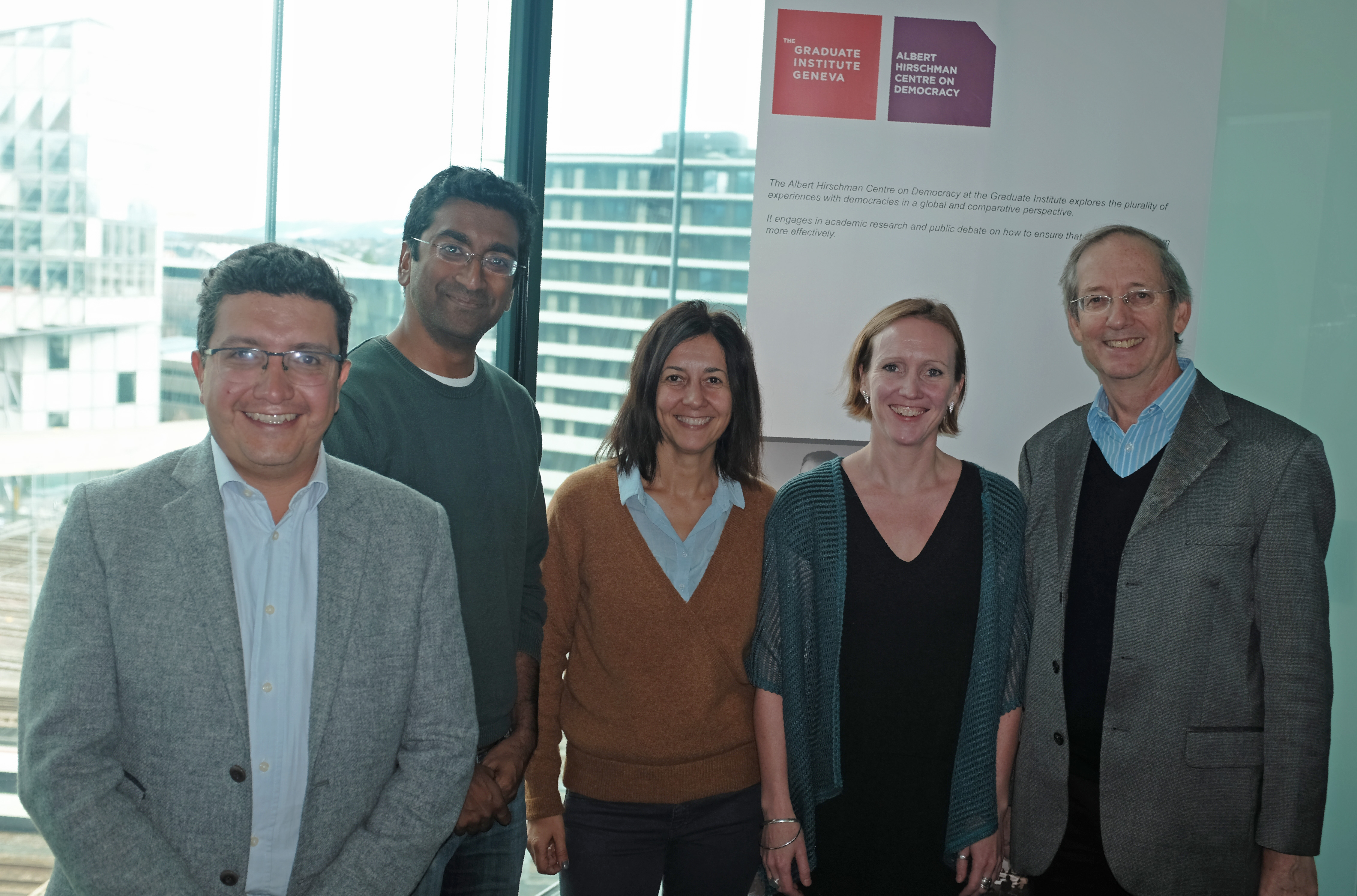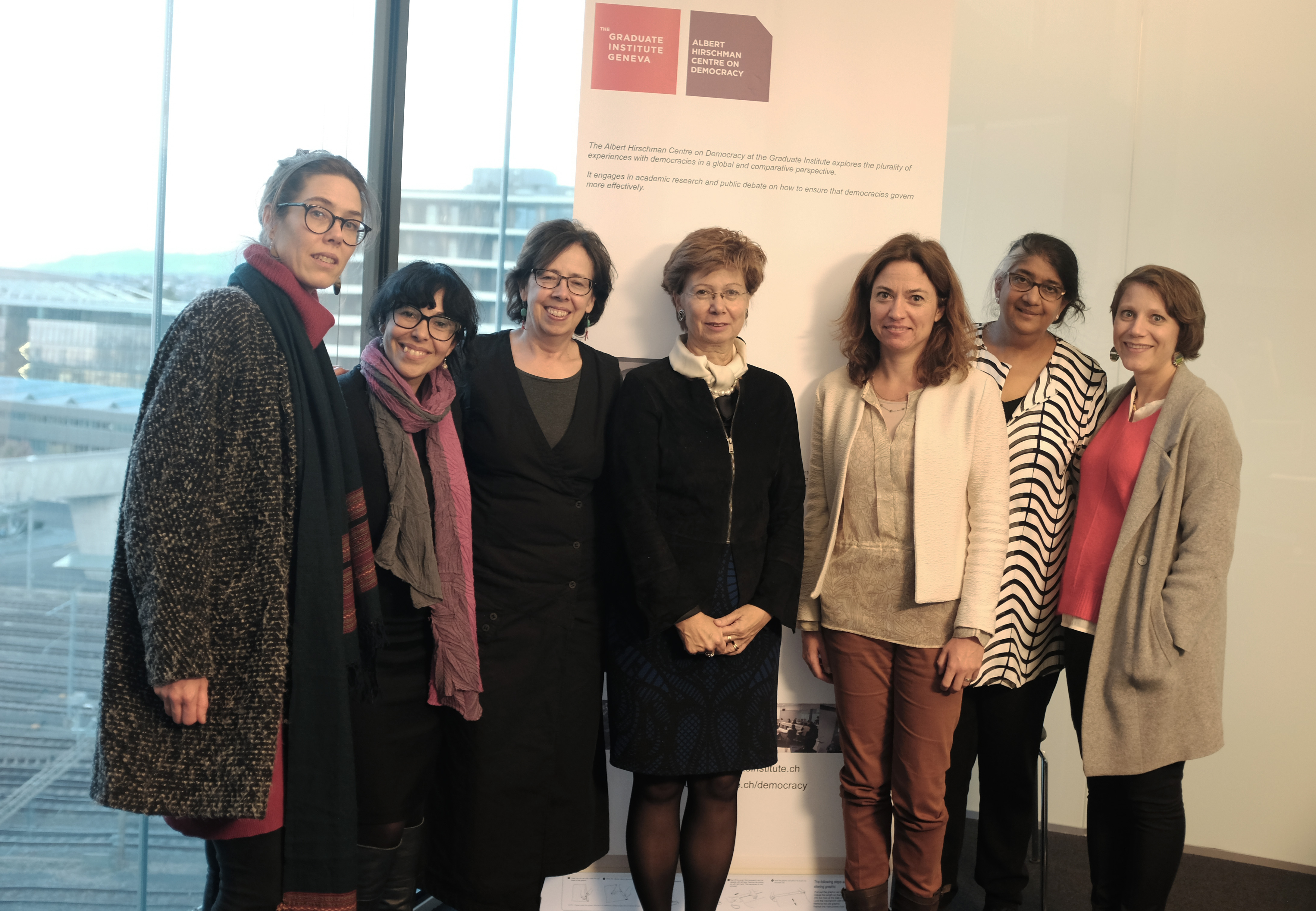Building on the 2017 annual conference, which sought to diagnose malaises with contemporary democracy in broad historic and geographic perspective, this year’s conference focused in fine-grained detail on comparative democratic practices and experiences. Looking at the margins of contemporary democracies in the global North and South, conference participants explored whether margins are sites of democratic resistance, reinvention, rejection—and perhaps—irrelevance. Considering the plurality of democratic experiences at and from the margins, participants focused on citizens’ democratic aspirations, their dissatisfaction with existing institutions, as well as the dynamics of participation and protest: “exit, voice and loyalty” (Hirschman 1970).
Over the two days, fourteen speakers presented papers on four panels focused on democracy as encountered at the margins. The panels—on electoral practices, legal institutions, borders and displacement, and cities and land, and reflecting international, national, sub-national, and transnational cases from Latin America, Africa, Asia, and Europe—reminded us that margins are everywhere, fragmented and multivalent, spanning space, time, and identities. They are also ambivalent, with the potential for democratic expression and repression. And finally, they are also liminal, with political power emanating from their fluidity, invisibility, and unpredictability.




